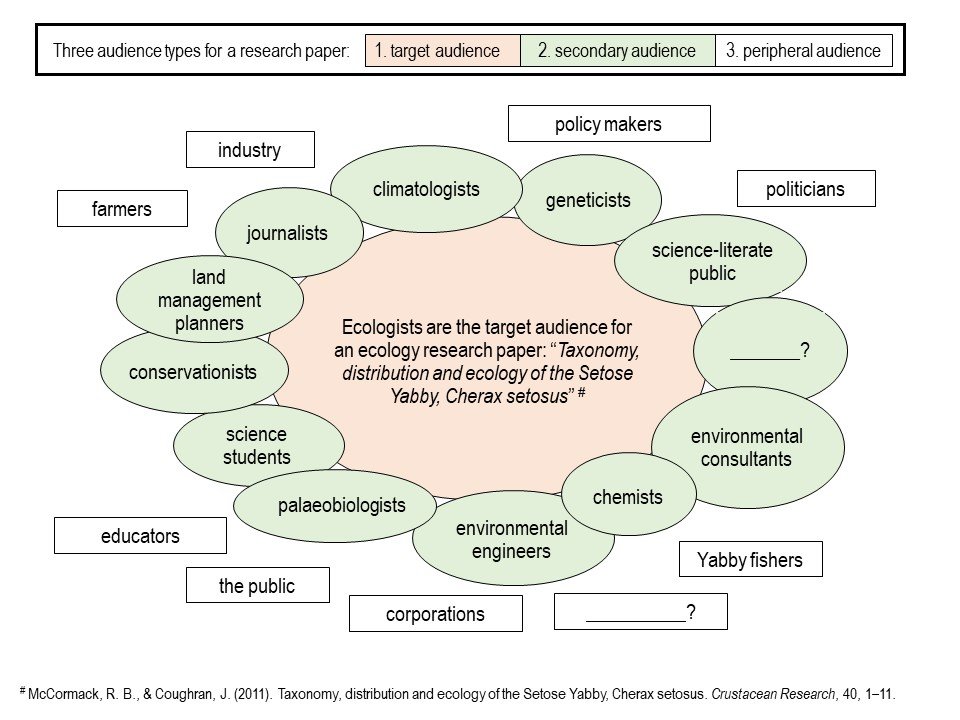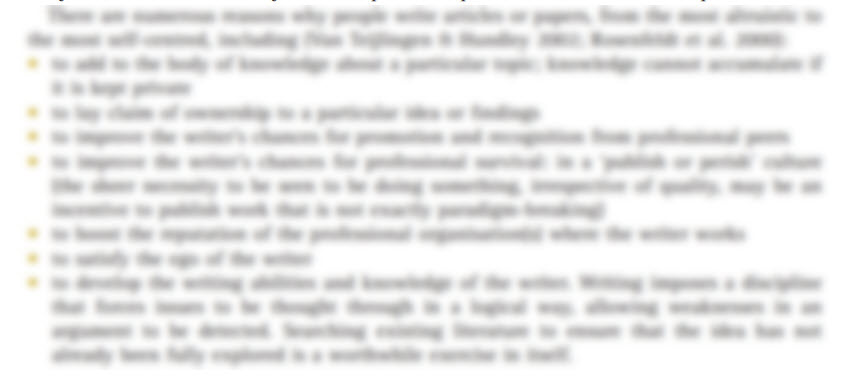When we write, we write about something (the topic) in a certain format (the document type) for a reader or group of readers (the audience). Deciding what we are writing about and what type of document to prepare is usually straightforward for most writers. However, deciding who we are writing for is not always thoroughly considered. To a large degree, the audience of a document is determined by the type of document and the subject matter but unless researchers and other science writers have a background in marketing, the concept of identifying and catering to a target audience might not be a high priority.
DOWNLOAD THE INFOGRAPHIC '6 ways to identify and cater to your target audience'
Unless catering to a target audience is a central objective, your document may lack some of the fundamentals of good document design. Spending the time deciding exactly what you want to do for your audience, rather than simply delivering information, will help you fine-tune the content and the design of your document.
Problems caused by not understanding your target audience
Common writing problems often reflect that a writer has not thoroughly considered who their audience is or what they need. This can cause the following problems:
- providing too much (or not enough) detail or background information
- providing too much detail on unrelated sub-topics or on a well-known topic
- using the wrong language or unfamiliar terminology
- assuming the audience’s level of interest in, or understanding of, the topic
One common mistake in science and academic writing is assuming your audience will know your topic nearly as well as you do. The problem with this assumption is that crucial background information and explanation of fundamental concepts may be omitted. Authors of research papers will often make this assumption deliberately if they are writing about a specialised topic. Yet even in these cases, it is not a good habit to omit important background information and project details that are necessary for the reader to understand the context of the research.
Get feedback
It is easy to fall into the trap of thinking that writing is simply delivering information if you are a solo writer, if you are inexperienced or if you don’t get regular feedback on your writing. If you do get regular feedback, it might not be enough if you only get feedback from people who know your topic well as you do; your colleagues or supervisors may ensure you write a scientifically-accurate document but anyone overly-familiar with your topic may not realise that what you’ve written is not clearly written or easy to read.
There are three different types of audiences to consider
An audience is a collective group of readers and for most purposes we need to think about our readers as a group and generalise about what qualities they have. I define three types of audience for most documents: the target audience, the secondary audience and the tertiary audience. For an example of this definition, refer to the diagram below that outlines the hypothetical audiences for an ecological research paper.
Your target audience is your intended audience. They are the group of readers that you want to read your document or you expect will read your document. These are the people you are designing your document for. Your target audience should understand everything you write. Some examples are research scientists writing peer-reviewed papers for their peers, students writing assignments for their lecturers or consultants writing reports for clients.
Your secondary audience are those people who still want, or need, to read your document but may have different education backgrounds or work within a different discipline to your target audience. For example, the secondary audience of an ecological research paper might be scientists from other disciplines, or other people interested in your topic or your project outcomes; for example, land managers, farmers, conservationists, journalists, science educators or students. Your secondary audience may not be thoroughly familiar with your topic but still has a strong or vested interest in your projects’ outcomes. However, it is not possible to cater to both your target audience and your secondary audience with the same document. You cannot cater to the secondary audience as you would need to provide too much detail or instruction, making it tiring for the target audience to read, or worse make the target audience feel the document is not designed for them.
You cannot explain everything for your secondary audience but you can help them navigate your document by defining your key terms and ensuring your main aim and findings are abundantly clear.
Your tertiary audience are people who will directly or indirectly benefit or be affected by your work in some way but will not read your document themselves; they will learn about your work either through the secondary or target audience of your document. Because your tertiary audience won’t be reading your document, it is crucial for you to ensure your key messages are abundantly clear so they are not mis-interpreted or mis-represented.
Key ways to identify and cater for your target audience
- Think about who your readers are and whether they fit into either of the three audience categories, then focus on how to cater for the target audience. Some factors to consider:
- Who will want or need to read your document? What reasons do they have for reading your document?
- Who will be interested in your topic and key findings? Why will they be interested in reading your document? If they are not already interested, how do you attract them?
- What is their occupation, expertise, background or level of education?
- Will they be able to understand all parts of your document? If not, include sufficient detail and explanation to ensure that they do or assign them to your secondary audience.
- What people need to read your document
- What task(s) will your document perform for them?
- How they will find out about your document?
- How will they access your document?
DOWNLOAD THE INFOGRAPHIC: 6 ways to identify and cater for your target audience
Once you have clearly mapped out who you are writing to and how you will cater to them. If appropriate, ask someone from your target audience to give you feedback on a late draft of your document. You might find there are some important aspects you still need to consider.
Remember:
- Do not assume your readers know everything you do.
- Understand there are different types of audiences who may read your document.
- Always define your key terms and explain your key concepts.
- If appropriate, ask someone from your target audience for feedback on a late draft of you rdocument.
© Dr Marina Hurley 2020 www.writingclearscience.com.au
Any suggestions or comments please email info@writingclearscience.com.au
Find out more about our new online course...
Now includes feedback on your writing Learn more...
SUBSCRIBE to the Writing Clear Science Newsletter
to keep informed about our latest blogs, webinars and writing courses.
FURTHER READING
- Should we use active or passive voice?
- 10 writing tips for the struggling ESL science writer
- Co-authors should define their roles and responsibilities before they start writing
- How to write when you don’t feel like it
- When to cite and when not to
- Back to basics: science knowledge is gained while information is produced
- How to build and maintain confidence as a writer
- If science was perfect, it wouldn’t be science
- What is science writing?
- 8 steps to writing your first draft
- Two ways to be an inefficient writer
- Work-procrastination: important stuff that keeps us from writing








